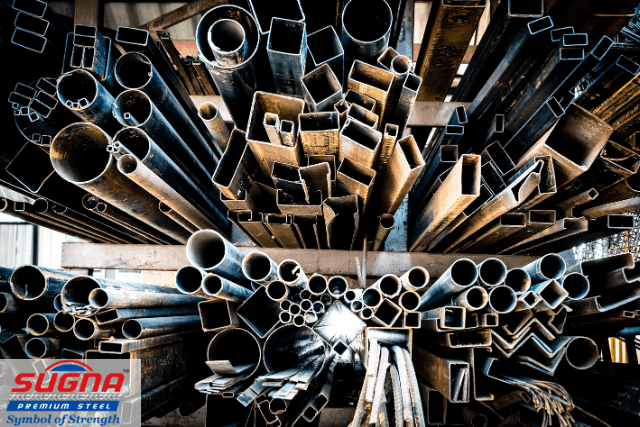In the realm of construction and manufacturing, steel is an undeniable king. But, as with any kingdom, there are different subjects, or in this case, different forms of steel: pipes, tubes, and bars. While they may look somewhat similar to the untrained eye, each serves unique purposes. Dive in with us as we unravel the distinctions between these steel powerhouses.
Steel Pipes vs Steel Tubes vs Steel Bars

1. Steel Pipes: The Transport Maestros
Pipes are primarily used for transporting liquids and gases. They are categorized based on their internal diameter.
Key Characteristics of Steel Pipes:
- Dimensional Standards: Typically measured by their internal diameter.
- Wall Thickness: This can vary depending on the pressure of the fluid being transported.
- Applications: Commonly used in water supply, oil & gas industries, and sewage systems.
Popular Types of Steel Pipes
| Type | Usage |
|---|---|
| Seamless | High-pressure applications, like oil and gas transportation |
| ERW (Electric Resistance Welded) | Lower pressure applications, like water supply |
2. Steel Tubes: The Precision Pros
Unlike pipes, tubes are often used when precision is key. They’re employed in structural applications and machinery where dimensions and tolerances are critical.
Key Characteristics of Steel Tubes:
- Dimensional Standards: Measured by their outside diameter and wall thickness.
- Shape: Can be round, square, or rectangular.
- Applications: Found in automobile, furniture, and construction sectors.
Popular Types of Steel Tubes
| Type | Usage |
|---|---|
| DOM (Drawn Over Mandrel) | Precision applications, like automotive parts |
| Structural Tube | Buildings and bridges |
3. Steel Bars: The Strength Sentinels
Steel bars are solid bars with a uniform cross-section. Their primary role? Providing structural support and reinforcement.
Key Characteristics of Steel Bars:
- Shapes: Can be round, square, flat, or hexagonal.
- Grades: Different grades cater to various structural needs and weight-bearing requirements.
- Applications: Used in construction for reinforcement, machinery parts, and tools.
Popular Types of Steel Bars
| Type | Usage |
|---|---|
| Reinforcing Bars (Rebars) | Used to strengthen concrete in buildings and bridges |
| Round Bars | Machinery parts and tools |
Pipes vs Tubes vs Bars: A Quick Comparison
| Criteria | Steel Pipes | Steel Tubes | Steel Bars |
|---|---|---|---|
| Primary Use | Transportation of fluids | Structural applications | Structural support |
| Measurement | Internal diameter | Outside diameter | Length and cross-section |
| Shape | Typically round | Round, square, or rectangular | Round, square, flat, hexagonal |
| Wall Thickness | Varies | Uniform | Solid |
Choosing the Right Steel for Your Project
- Assess Your Needs: For fluid transport, go for pipes. Need precision structures? Tubes are your friend. If it’s about strength and support, bars are the way.
- Check Quality and Certification: Ensure the steel meets industry standards.
- Consult with Experts: Whether it’s a supplier, engineer, or contractor, their advice will be invaluable in making the right choice.
In Conclusion
While they might all come from the steel family, pipes, tubes, and bars have distinct roles to play. Having clarity on their differences ensures that projects are executed with efficiency and precision. We hope this guide has shed some light on these steel variants, equipping you to make informed decisions in your professional endeavors.
Questions or insights on the topic? Feel free to share. After all, steel is strong, but shared knowledge is stronger!

